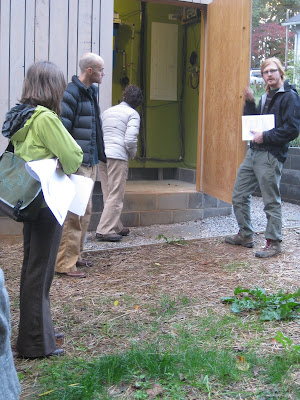The past few weeks have been busy with end of the semester activities—final papers, tests, and presentations. The fall semester is over and now it’s time to enjoy the break and the holidays before classes begin again in January. There’s no snow on the ground yet, and with a forecast of rain and temperatures in the low 50s for the next five days, no chance for a snowy Christmas this year.
Speaking of rain, this fall was especially rainy. Not only did we observe many days with rain, but I recorded rainfall in a rain gauge for my fall semester Bionformatics class (bioinformatics, also known as environmental informatics, includes the collecting, linking, storage, organization, analysis, delivery, and application of biological data and information). One of our projects required us to record rainfall at our residence on a daily basis, and at the end of the semester, prepare a report with rainfall data, analysis, metadata, a data management plan, and conclusions.
 |
| my rain gauge, holding 3" of rain; the student research self emptying bucket on pole |
I installed my rain gauge on the side of the electrical/garbage wooden enclosure. It’s a wedge shaped plastic gauge, and is easy to remove for readings. The student researchers are also monitoring rainfall, but they are using a self emptying bucket with a sensor that sends measurements electronically. Their white bucket is installed on the utility pole, and can be seen in the background.
The total number of days in my study was 85, and 28% of the days monitored received rainfall. September 5th, the first day of recorded rainfall, happened to be during Tropical Storm Lee, and 6.10” of rain fell that day. September topped out at 9.86”. October’s total was lower at 4.92”, but November had much more rain than usual at 9.06”. The chart below compares the rainfall I recorded to the monthly normals (30 year averages based on the period of 1971-2000).
In the course of the project, I discovered the Tennessee Valley Authority (TVA) Region Precipitation
website. The TVA has rain gauges throughout the region and uses the data to make water management decisions. I compared my data taken at the house with the measurements taken at the Norris Dam, and the rainfall amounts were very close.
In light of all the fall rain, the rainwater cistern for the house (it provides water for the clothes washer and toilet tank) was most likely never empty. It’s great to be living in a house where the rainwater is being reused and also in constant supply.
















































